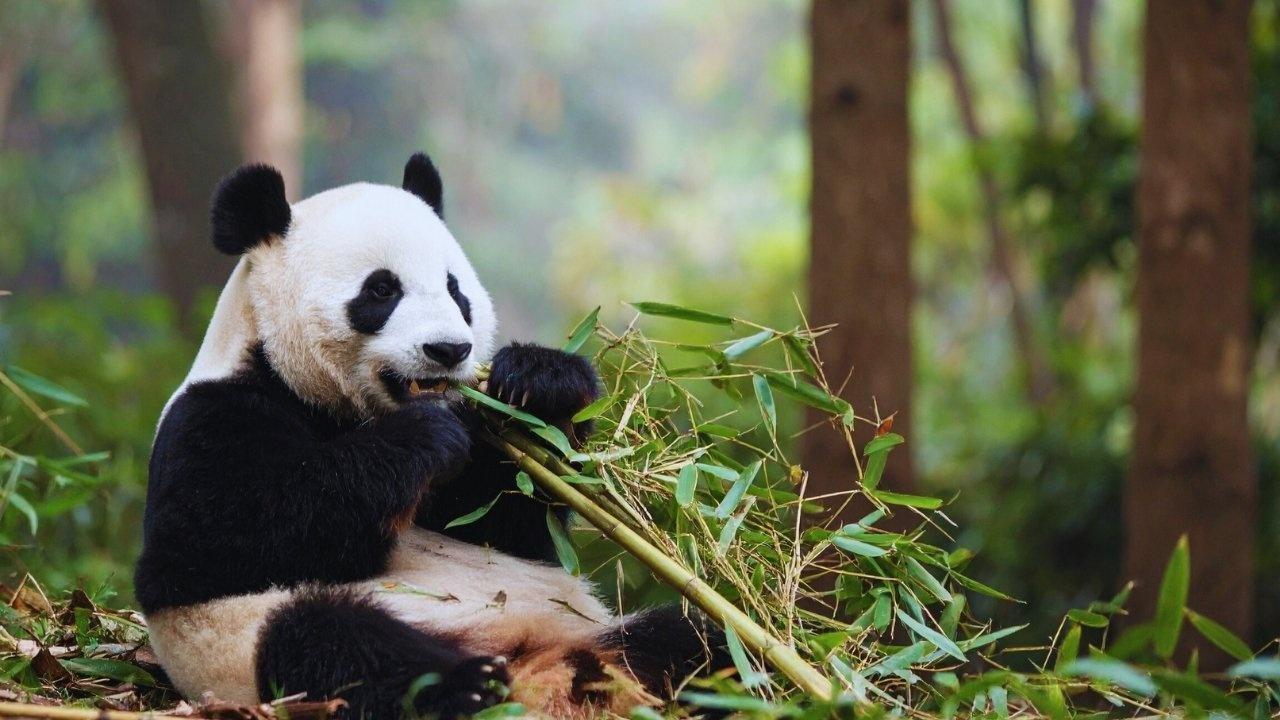
Join 10k+ people to get notified about new posts, news and tips.
Do not worry we don't spam!

Post by : Anis Farhan
India hosts an extraordinary range of ecosystems—dense forests, wetlands, deserts and mountain ranges—supporting tigers, elephants, rhinos and myriad other species. These populations face intensifying pressures from poaching, habitat loss, climate shifts and expanding human settlements. Conventional conservation—ranger patrols, camera trapping and manual surveys—remains valuable but is often laborious, slow and limited in scope.
The rise of artificial intelligence (AI) and machine learning (ML) offers new tools for conservationists. By processing vast datasets, revealing patterns, forecasting risks and informing decisions, these technologies enable a more proactive, evidence-led approach to protecting India’s natural heritage.
Camera traps and drones equipped with AI can automatically categorise animals captured on images and video. ML models sort through visual data to detect species, separate individuals by distinctive markings and generate reliable counts.
These systems give researchers clearer population estimates and movement maps without repeatedly disturbing habitats. Compared with traditional fieldwork, AI delivers faster, near-real-time intelligence that supports more timely conservation measures.
Poaching continues to imperil species such as tigers, elephants and rhinos. AI helps by analysing patterns—human activity, past poaching incidents and environmental variables—to flag likely hotspots.
Predictive models can guide authorities to concentrate patrols where they are most needed. AI also assists in policing illicit wildlife trade by scanning online marketplaces and social platforms for suspicious listings and communications.
ML techniques applied to satellite imagery and remote-sensing datasets enable continuous tracking of landscape change. These tools reveal deforestation, fragmentation and the effects of urban growth or climatic trends.
With improved habitat intelligence, conservation planners can design corridors, prioritise reforestation and target restoration efforts—directing resources to locations where interventions will have greatest benefit.
Conflicts—such as crop damage by elephants or predator attacks on livestock—threaten both communities and animals. Predictive modeling, fed by movement data and historical incidents, helps forecast where clashes may occur.
Early-warning alerts can be issued to villagers, park managers and NGOs, enabling preventive steps like temporary barriers, alert systems or community outreach to reduce harm on both sides.
Project Tiger and other initiatives have begun using AI to improve monitoring. Algorithms process camera-trap imagery to identify individual tigers by stripe patterns, estimate densities and reveal corridors.
These insights strengthen anti-poaching measures and supply robust data for policymaking, helping India maintain its leadership in tiger protection.
Drones and sensor networks with AI capabilities are used in sanctuaries to follow elephant herds and rhino populations. Systems map migratory paths, spot injuries or stress indicators, and monitor habitat usage.
In regions where rhino poaching is a concern, behavioural analysis by ML models helps predict risk and focus rapid-response patrols.
AI is being extended to aquatic environments: underwater cameras and ML can classify fish, turtles and other marine life, while also flagging illegal fishing activity.
In wetlands, automated monitoring helps protect migratory bird stopovers and detect ecological changes from pollution or climate impacts, enabling timely interventions.
Where traditional surveys demand large teams and time, AI can sift through extensive datasets rapidly, extending coverage and providing actionable outputs in real time—critical in a country with India’s geographic diversity.
Although initial deployment can be costly, AI can lower long-term expenses by reducing manual fieldwork, optimising patrol patterns and automating analysis—freeing limited conservation funds for high-impact activities.
ML delivers evidence that strengthens policy choices on protected areas, wildlife corridors and anti-poaching strategies, reducing reliance on anecdote and improving outcome predictability.
Predictive analytics can anticipate threats—poaching, encroachment or conflict—so that preventive measures are taken sooner, saving lives and preserving ecosystems.
AI depends on high-quality data. In remote locations, equipment maintenance, connectivity and sensor reliability can limit system performance and output accuracy.
Monitoring must be balanced with respect for local communities. Conservation technologies should avoid intrusive surveillance and protect residents’ privacy while focusing on wildlife protection.
Effective use of AI requires capacity-building for park staff and conservation partners. Without appropriate training, tools risk underuse or misinterpretation.
Deploying advanced systems—particularly drones and extensive sensor networks—can be expensive, and budget limits may slow wider adoption.
Combining AI with IoT devices and autonomous platforms promises near-continuous surveillance of forests, corridors and water bodies—triggering real-time alerts that support rapid responses.
AI tools can empower local people to join conservation efforts: mobile alerts about nearby wildlife or apps to report illegal activity foster collaborative protection models.
Sharing AI-derived datasets across borders can improve protection for migratory species and transboundary ecosystems. India’s experience offers lessons for other biodiversity-rich nations.
AI accelerates ecological research by analysing behaviour, breeding, migration and species interactions—producing insights that support more effective conservation plans.
AI and ML are reshaping wildlife conservation in India by making monitoring more efficient, anticipatory and inclusive. From terrestrial giants to marine and wetland life, these technologies help conservationists make informed, timely choices that protect biodiversity and lessen human-wildlife tensions.
Challenges remain—cost, technical limits and training needs—but with ethical deployment, community engagement and supportive policy, AI can significantly enhance conservation outcomes. Blending technology, local knowledge and coordinated action will be essential to preserve India’s rich natural legacy.
The path forward lies in adopting AI responsibly, encouraging innovation and strengthening partnerships among government agencies, NGOs, researchers and communities so India can continue to lead in safeguarding its unique wildlife.
This article is for informational and educational purposes only. It does not constitute professional advice. Readers should consult conservation experts or authorities for guidance on wildlife management, AI implementation, and related policies.










Zohran Mamdani Clinches NYC Mayoral Seat as Victory Speech Blends Politics and Bollywood
Zohran Mamdani won New York City's mayoral race, becoming the city's first Muslim and South Asian ma

India Wins First Women’s World Cup 2025 Title
India lifts its maiden Women’s World Cup 2025 title! Harmanpreet Kaur’s team stuns South Africa in a

Manuel Frederick, 1972 Olympic Bronze Goalkeeper, Dies at 78
Manuel Frederick, a member of India’s 1972 Olympic bronze hockey team, has died in Bengaluru at 78 a

Muhammad Hamza Raja Wins IFBB Pro Card Puts Pakistan & UAE on Global Stage
Pakistani bodybuilder Muhammad Hamza Raja earns IFBB Pro Card in Czech Republic, showcasing Dubai’s

Shreyas Iyer’s Recovery Underway After Spleen Laceration in Sydney ODI
Shreyas Iyer is recovering after a spleen laceration sustained while taking a catch in the Sydney OD

Qatar Ready to Host FIFA U-17 World Cup 2025 in Aspire
Qatar confirms full readiness to host the FIFA U-17 World Cup 2025 from November 3–27, with world-cl